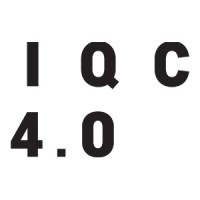
Open
Investment and innovation tax credit (IITC)
Last Update: October 27, 2025
QC, Canada
Tax credit for investment and innovation in Quebec
Tax Credits
At a glance
Funding available
Financing goals
Research and experimental development
Integrate new technologies
Reduce the ecological footprint
See more
Eligible Funding
- Up to 25% of project cost
Timeline
- Unspecified
Eligible candidates
Eligible Industries
- All industries
Location
- Quebec
Legal structures
- For-profit business
- Non-financial cooperative
Annual revenue
- All revenue ranges
Organisation size
- All organization sizes
Audience
- Canadians
Overview
The Quebec Investment and Innovation Tax Credit offers a variable credit rate of up to 25% for businesses acquiring eligible assets, depending on the region's economic vitality. The program aims to support the acquisition of new manufacturing and processing equipment, information technology equipment, or management software primarily used in Quebec.
Activities funded
- Acquisition of eligible manufacturing and processing equipment (Category 53 under the Regulation respecting the Taxation Act).
- Acquisition of universal electronic data processing equipment or related operating software (Category 50 under the Regulation respecting the Taxation Act).
- Acquisition of equipment primarily used for processing minerals extracted from resources located outside Canada (Category 43 under the Regulation respecting the Taxation Act).
- Acquisition of eligible management software packages (Category 12 under the Regulation respecting the Taxation Act).
- Acquisition of equipment primarily used for smelting, refining, or hydrometallurgy of minerals, except those from gold or silver mines extracted from a resource located in Canada.
Examples of admissible projects:
$ 125,000
Introduction of advanced automation technology for manufacturing
$ 60,000
Investing in an ERP software system to streamline operations
$ 90,000
Acquisition of data processing equipment to upgrade IT infrastructure
$ 100,000
Upgrading mineral processing equipment at the mining facility
$ 40,000
Procurement of customer relationship management software for enhanced client handling
$ 75,000
Acquiring new CNC machines for precision manufacturing with advanced features
Eligibility
- The applicant must be a corporation with an establishment in Quebec and must be carrying on business there during its taxation year.
- The applicant cannot be a tax-exempt corporation.
- Excluded entities: Crown corporations or their wholly controlled subsidiaries, aluminum production companies, and oil refining companies.
- If the asset is acquired by a partnership, the partnership must meet eligibility conditions and the credit will be granted to its corporate members.
Who is eligible?
- Corporations with an establishment in Quebec operating a business during the tax year
- Partnerships acquiring eligible property, with members who are eligible corporations
Who is not eligible
- Companies that are exempt from tax.
- Crown corporations or subsidiaries wholly controlled by such corporations.
- Aluminum production companies.
- Petroleum refining companies.
Eligible expenses
- Capital costs for the acquisition of a "specified property" (bien déterminé), including:
- Manufacturing and processing equipment (category 53 of Schedule B of the Taxation Act Regulations).
- General-purpose electronic data processing equipment and related operating software (category 50 of Schedule B).
- Eligible management software package (category 12 of Schedule B).
- Equipment used primarily for the processing of ore extracted from mineral resources located outside Canada (category 43 of Schedule B).
- Equipment used primarily for smelting, refining, or hydrometallurgical activities involving ores (excluding gold or silver) extracted from mineral resources located in Canada.
Eligible geographic areas
- Companies with an establishment and business operations in Quebec.
- Specific credit rates apply depending on whether the asset is primarily used in areas of low, intermediate, or high economic vitality within Quebec.
How to apply
1
Identify the grant program
- Search for grant programs that match the project.
- Analyze the eligibility criteria to ensure eligibility.
- Take note of submission deadlines.
2
Prepare the required documentation
- Compile all necessary financial and administrative documents.
- Write a detailed project plan including objectives, methodology, and impact.
- Obtain letters of support or commitment if needed.
3
Write the grant application
- Follow the guidelines provided by the program for writing.
- Use clear and precise terms and language.
- Include all requested information without forgetting the attachments.
4
Submit the request
- Re-read and check the request to ensure there are no errors.
- Send the request by the specified method (online, by email, or by post).
- Keep a copy of the submitted request for personal records.
5
Track the status of the request
- Contact the responsible organization if no response is received after a reasonable delay.
- Inquire about the upcoming deadlines to be met (possibility of appeal or request for additional information).
- Prepare a plan for administrative follow-up once the grant is accepted.
Additional information
- An extension of the deadline for submitting the application form is planned, allowing the submission of form CO-1029.8.36.II until June 30, 2024, or within 183 days following a notice of assessment that refused the credit for a prior year.
- The eligible property must be used in Quebec for a minimum period of 730 consecutive days, except in cases of force majeure (loss, theft, major breakage, accidental destruction, or obsolescence).
- Expenses related to a specific property incurred with persons having a dependency relationship with the corporation or the corporation being a member of a partnership are not eligible in the calculation of the credit.
- The acquisition as part of a joint venture leads to a calculation of the exclusion threshold proportional to the share of the business in the specific property.
Apply to this program
Frequently Asked Questions about the Investment and innovation tax credit (IITC) Program
Here are answers to the most common questions about the Investment and innovation tax credit (IITC). This section explains what the program is, how much funding is available, eligibility requirements, application deadlines, and other important details to help you determine if this grant is right for your business.
What is the Investment and innovation tax credit (IITC)?
How much funding can be received?
What expenses are eligible under Investment and innovation tax credit (IITC)?
What is the deadline to apply?
Is the Investment and innovation tax credit (IITC) a grant, loan, or tax credit?
Who are the financial supporters of the Investment and innovation tax credit (IITC)?
Who is eligible for the Investment and innovation tax credit (IITC) program?
Who can I contact for more information about the Investment and innovation tax credit (IITC)?
Where is the Investment and innovation tax credit (IITC) available?
Apply to this program
More programs like this

Grant and FundingClosed
MAPAQ — Food Processing Program — Component 2
Ministry of Agriculture, Fisheries and Food (MAPAQ)Enhancing productivity through food industry automation assistance

Grant and FundingOpen
ESSOR – Component 1C: Support for investment projects (implementing a digital plan)
Investissement Québec (IQ)Support for investment projects in Quebec

Grant and FundingOpen
SCALE AI — Acceleration
Scale AI ClusterSupports Canadian AI startups and SMEs focused on value chains

Tax CreditsOpen
Development of E-Business Tax Credit (CDAE)
Investissement Québec (IQ)Tax credit for development of a Quebec e-business

Tax CreditsOpen
Research, Innovation and Commercialization Tax Credit (CRIC)
Gouvernement du QuébecRefundable tax credit for Quebec business R&D and precommercialization

Grant and FundingClosed
NovaScience Program - Support for projects in scientific culture and innovation
Gouvernement du QuébecNovaScience promotes scientific culture and innovation development

Expert AdviceClosed
Quebec Initiative for Construction 4.0 — Stream 1
Groupe BIM du Québec (GBQ)Digital transformation plan for Quebec construction industry

Grant and FundingOpen
Ecocamionnage Program — Logistics Project Component
Minister of Transport and Sustainable Mobility of QuebecGreenhouse emission reduction aid for freight transport

Grant and FundingOpen
Support for Innovation and Productivity for Québec manufacturing companies (SIPEM) - Part 1
PROMPTSupports technological innovation for Quebec manufacturing productivity

Grant and FundingOpen
ESSOR – Component 1B: Support for investment projects (digital diagnostics)
Investissement Québec (IQ)Support for investment projects through digital transformation
Sign up to our platform to access the Investment and innovation tax credit (IITC) information sheet for free
Get access to 4,000+ programs, practical guides, personalized alerts, and an AI assistant to support your grant applications.